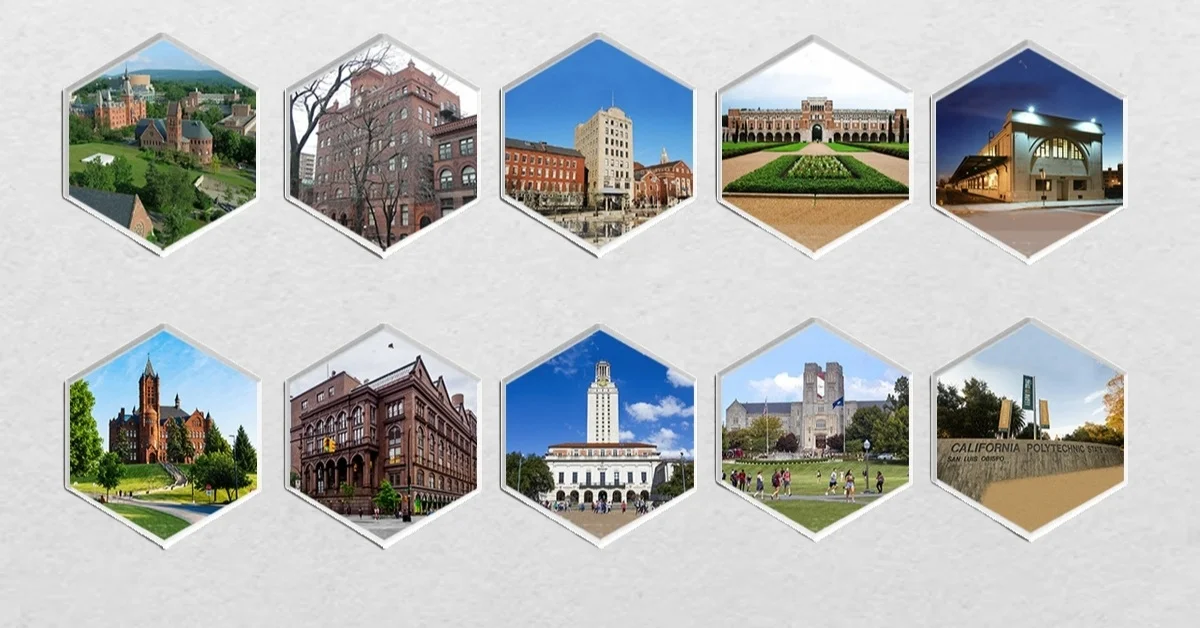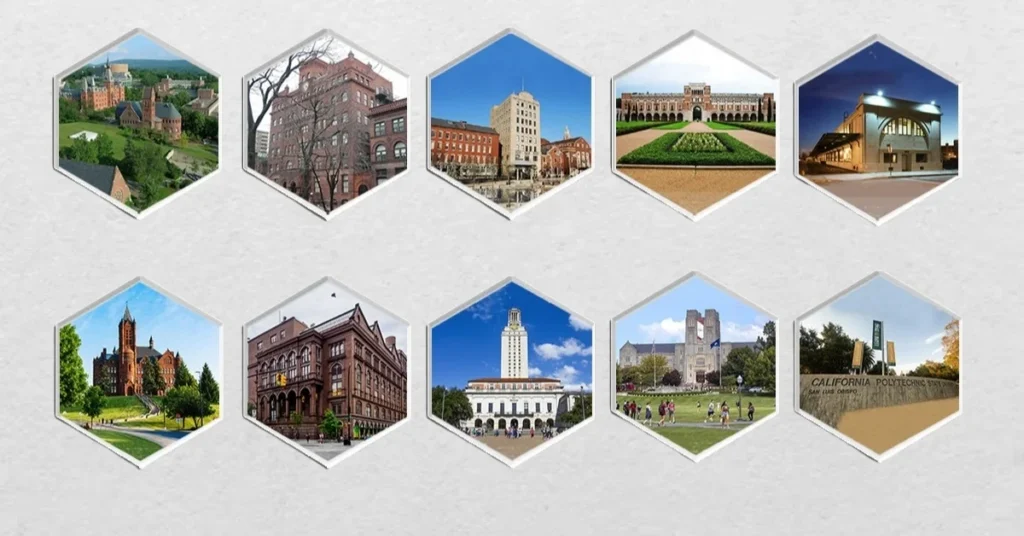Best colleges in the US for architecture with real insights, top picks, and tips. Find your fit and plan your next step with confidence today.

Picking the best colleges in the US for architecture can feel like building without a plan. I remember asking myself, Which college is best for architecture? and Is my GPA good enough to get in? I’ve been through the search, the stress, and the student tours. What I found is that the right school depends on more than just rankings. In this guide, I’ll share what I learned—and help you find a path that fits you.
What Makes a Great Architecture Program?
Choosing a college for architecture isn’t just about rankings. The best colleges in the US for architecture have more going on behind the scenes. Some things matter more than you’d think—like support, tools, and the people around you. I learned that the hard way.
First, make sure the program is NAAB-accredited. This is key if you want to become a licensed architect later. Without it, your degree might not count.
Quick tip: Only NAAB-accredited programs qualify you for a license in most states.
Next, check out the studio culture. This is where you’ll spend most of your time. Late nights, big projects, group crits—this is where real growth happens. A good studio feels like a second home.
Teachers matter a lot. The best ones have real-world design jobs too. They bring fresh ideas from the field and push you to think big. I still remember the first time a professor tore apart my design—but it made me better.
Look for faculty who work in the field—it keeps your education real.
Also, ask about internships. A strong school will help you land one. Good programs work with real firms and host career fairs. My first internship came from a school connection—and it led to paid work.
Don’t forget the tech and tools. You’ll use programs like Revit and Rhino, and tools like 3D printers. One school I toured had a 24/7 lab. Another didn’t even offer laser cutting.
Pro tip: A well-equipped lab can make or break your project.
Location counts too. Cities offer more design jobs and fresh ideas. But they also cost more. A smaller town might offer more space, less debt, and just as much support.
Balance cost, access, and design vibes when picking your spot.
In the end, what helped me most wasn’t just a fancy campus. It was feeling seen and supported. That made all the hard nights worth it.
Best Colleges in the US for Architecture (Top Picks)
If you’re asking, “What college has the best architecture program in the US?”—you’re not alone. I asked the same thing. But I learned something: the right school feels right for you. Here are the top picks based on real people and real results.
Cornell University – Strong Ivy League Program
Cornell has a five-year B.Arch program. The school is known for design, history, and studio work. Students work hard but learn a lot.
- Short answer: Cornell is great for deep design and global study like the Rome Program.
I met students there who stayed in the studio late into the night. They said it was tough, but worth it. If you like a challenge, this school might be for you.

MIT – Top School for Tech-Driven Design
MIT mixes design and science. You won’t just draw—you’ll test ideas too. It’s perfect for people who love smart, clean design.
- MIT is best for students who want to mix design with real-world tech.
I saw student projects that looked like cities from the future. The vibe is bold, but sharp. You’ll be around smart and driven classmates.
Cal Poly San Luis Obispo – Best for Hands-On Work
Cal Poly is all about learning by doing. The B.Arch program is packed with real projects. Students often graduate with work experience.
- This school gives great value and real-world prep.
When I visited, the energy in the studio was strong. People were building models, testing ideas, and helping each other. It felt real—not just schoolwork.
Rhode Island School of Design (RISD) – Best for Artists
RISD is for design lovers. It’s deep in art and ideas. You’ll explore more than just buildings—you’ll explore concepts.
- RISD is ideal for students who think like artists first.
I saw student work that felt like art shows. It was bold and wild, but thoughtful too. If you love creative freedom, this is your place.
University of Southern California (USC) – Great for Career Access
USC is in Los Angeles, close to many design firms. The school blends architecture with film, tech, and business. That makes it unique.
- USC is best for students who want to network and grow in a big city.
Students told me LA is full of ideas and job chances. Plus, the campus is bright, busy, and full of life.
Cooper Union – Small and Focused
Cooper Union is hard to get into, but worth it. It has small classes and a strong design focus. Many students get aid or free tuition.
- Cooper Union gives deep training with strong personal support.
I met students who said it felt like family. Studio life is tight-knit. You get lots of feedback and grow fast.
Other Good Options
Don’t forget these:
- Virginia Tech – Great for studio and teamwork
- UT Austin – Affordable and well-known
- Syracuse – Global study and portfolio help
Reminder: The best college for you is the one that fits your style, goals, and budget.
Final tip: It’s not just about rankings. It’s about what helps you grow. The best colleges in the US for architecture will guide you, but you’ll build the path.
What GPA Do You Need to Get into Architecture School?
Short answer: Most top architecture schools look for a GPA of 3.5 or higher, but strong portfolios can make up for lower grades.
Let’s be real—GPA matters, but it’s not everything. When I applied, I stressed about every decimal point. Some friends had a 4.0 but weak portfolios. Others had a 3.0 and still got into great programs because their designs stood out.
- Tip: A great portfolio can balance out a lower GPA if your creativity shines.
Most top schools—like Cornell or MIT—want a GPA around 3.5 or more. But others, like Cal Poly or Virginia Tech, are flexible if the rest of your application is strong. Architecture schools look for passion, not just numbers.
- General rule: Aim for a GPA of 3.0+ for competitive programs and 3.5+ for top-tier ones.
For me, my GPA was solid but not perfect. What helped? My portfolio told my story. It showed who I was through hand sketches, models, and even one weird project made from cardboard. I think that’s what caught their eye.
- Insight: Your portfolio should tell a clear, creative story that feels like you.
Also, don’t ignore other parts of your app. Some schools value design essays, letters, or even your resume. I had a summer job with a local architect and added that to my application. It wasn’t huge, but it showed real-world interest.
- Add value: A short internship or job shadow can help show your passion for architecture.
Last thing—if your GPA isn’t where you want it to be, don’t panic. Some students start with a BA or BS in architecture and transfer later into a B.Arch or M.Arch path. There’s always more than one way to get where you’re going.
- Reminder: There’s no one-size-fits-all path. The best colleges in the US for architecture value growth and grit as much as grades.
My Personal Journey in Architecture
Why did I choose architecture?
I chose it because I love both art and logic. I liked drawing and solving problems. I wanted to build things that mattered.
- I picked architecture because it mixes design with real-world problem solving.
One day, I sketched a building just for fun. That small moment helped me choose my path.
What surprised me about studying it?
I didn’t know how long studio hours would be. Some nights I stayed up very late. The work was hard, but also fun.
- The biggest surprise? How much time and energy studio takes.
It also felt personal. Every design was a part of me. That made the work feel real.
What were the best and hardest parts of school?
The best part was seeing my ideas come to life. I loved building models and solving problems. It felt great to see my hard work pay off.
- Best part: Making real things from your own ideas.
The hardest part? Time. Studio took over my life. It was hard to balance other things.
- Hardest part: Architecture takes a lot of time, so planning is key.
What advice do I wish someone had told me?
Start early. Don’t wait until the last minute. And take breaks—rest helps your brain.
- Start early and rest often. Your mind needs time to think clearly.
Also, don’t fear failure. Bad projects still teach you a lot. What matters is how you grow.
- Mistakes are okay. Growth matters more than perfect work.
Final thought:
Architecture changed how I see the world. I notice shapes, spaces, and how people move. It’s not just a job—it’s how I think now.
- Studying architecture changes how you see everything around you.
Let me know if you’d like the actual FAQ schema markup for SEO or want to keep going with the next section: VI. How to Choose the Right Architecture School for You.
How to Choose the Right Architecture School for You
Short answer: The right architecture school fits your goals, budget, learning style, and life—not just a ranking.
When I started my search, I looked at rankings and cool buildings. But I didn’t know what I really needed. I learned that finding the best colleges in the US for architecture isn’t just about fame—it’s about fit.
- Tip: A top school is one that feels right for you, not just the one with the best name.
What type of program fits you?
There are two main paths: B.Arch and BS/BA in Architecture. A B.Arch takes five years and leads straight to licensure. A BS or BA is often four years, then you’ll need a master’s to become licensed.
- Want to become an architect faster? Choose a B.Arch program.
I didn’t know the difference at first. I just followed the crowd. Looking back, I wish I had asked more about the long-term path.
Can you afford it—and is it worth it?
Architecture school is not cheap. Between tools, software, and long studio hours, costs add up fast. Some schools offer great aid. Others offer in-state tuition or free tuition like Cooper Union used to.
- Choose a school that won’t leave you drowning in debt.
I had friends who picked big-name schools, then struggled to stay in. I picked a more affordable option—and still got great jobs.
Where is the school located?
Location matters more than you’d think. Big cities offer job access and creative energy. Smaller towns can be more peaceful and affordable.
Look for a place that fuels your creativity—but also supports your lifestyle.
One friend loved being near New York’s design firms. Another thrived in a quiet college town with lower rent. There’s no right answer.
What’s the studio culture like?
You’ll spend most of your time in studio, so the vibe matters. Are students helpful or competitive? Are professors engaged and kind?
A healthy studio culture helps you grow, learn, and enjoy school.
During my visits, I paid close attention to how students talked about their work. Were they proud? Burned out? That told me a lot.
Does the school support internships?
Good schools don’t just teach—they connect. Look for programs that help with internships, job fairs, or alumni support. That first job can launch your whole career.
- Ask: Will this school help me get real-world experience before I graduate?
My first internship came from a school job board. Without it, I might’ve struggled to get started.
Mini Checklist: 5 Must-Haves Before You Choose
- NAAB accreditation
- Studio culture that fits your style
- Financial aid or reasonable tuition
- Access to tech and materials (CAD, 3D printers, etc.)
- Internship and job support
- Before you commit, make sure your school checks these five boxes.
Final thought: Choosing a school is a big step—but it’s just the start. You’re not picking a name. You’re picking a space to grow, design, and build your future.
What college has the best architecture program in the US?
Cornell University is often ranked #1 for architecture in the US.
That said, “best” depends on what you need. Cornell has Ivy League rigor and a strong B.Arch program. But if you love tech, MIT might suit you better. Want hands-on learning? Cal Poly is amazing.
- Tip: The best school is one where you’ll grow, not just survive.
Which college is best for architecture overall?
Top schools include Cornell, MIT, RISD, Cal Poly, USC, and Cooper Union.
Each offers something unique. RISD blends art and design. Cal Poly gives real-world experience. Cooper Union once offered full tuition. Don’t just chase rankings—look for your fit.
- Find a school that fits your goals, not just your resume.
What GPA do you need to get into architecture?
A GPA of 3.5+ helps at top schools, but many accept 3.0+.
Don’t panic if your grades aren’t perfect. Your portfolio often matters more. Schools want to see your creativity, not just numbers.
- Strong ideas can outweigh a so-so GPA—show your spark.
Is B.Arch better than BS in Architecture?
B.Arch is better if you want to become an architect faster.
It’s a 5-year path to licensure. A BS or BA is usually 4 years, but you’ll need a master’s to get licensed. B.Arch is more intense but skips grad school (for many).
- Choose B.Arch for a direct route; BS/BA for flexibility.
Do you need math for architecture school?
Yes, but it’s not all about numbers.
You’ll need basic geometry and algebra. Some schools require calculus or physics too. But don’t worry—you don’t need to be a math genius. Most of the work is visual and creative.
- Architecture uses math—but design skills matter more.
Is architecture a hard major?
Yes, it’s one of the toughest majors—but also one of the most rewarding.
Expect long hours, late nights, and detailed projects. But it’s also creative, hands-on, and deeply fulfilling. You’ll grow in ways you didn’t expect.
- Hard? Yes. Worth it? Absolutely.
How long does it take to become an architect?
It usually takes 8–11 years, depending on your path.
A B.Arch takes 5 years, plus 3 years of experience (AXP), and you’ll need to pass the ARE exams. With a BS/BA, add a 2–3 year M.Arch. It’s a marathon, not a sprint.
Becoming an architect takes time—but it’s worth the climb.
Resources & Tools
Quick answer: These links helped me a lot when I was picking my architecture school. They saved time, stress, and even money.
NAAB-Accredited Programs
To become a licensed architect, your degree must come from a NAAB-accredited school. NAAB stands for National Architectural Accrediting Board.
- Check here to see if a school is approved for licensure.
NAAB School List
Niche & College Transitions
These sites helped me learn more about schools. Niche has real student reviews. College Transitions shows how strong each program is.
Portfolio Examples
Your portfolio shows who you are as a designer. I looked at student work online to get ideas.
- Don’t copy—get inspired and find your own style.
Issuu Architecture Portfolios
Behance – Student Projects
Scholarships
School is not cheap. I found grants and aid from places like AIA, Fastweb, and Scholarships.com. Even $500 helps.
- Start early—some deadlines are months ahead.
AIA Scholarships
Fastweb
Scholarships.com
Bonus Tools I Used
- Google Maps – See the campus and nearby places
- YouTube – Student vlogs and reviews
- LinkedIn – See what grads are doing
- Notion or Trello – Keep track of tasks and apps
- Next Gen Architect – See the student vlogs content
- Simple tools helped me stay on top of everything.
Final Tip: Save your top links in one folder. When stress hits, you’ll thank yourself later.
Conclusion
Quick answer: The best colleges in the US for architecture aren’t one-size-fits-all—they’re the ones that match your style, goals, and story.
Choosing the right school felt big—because it is. But here’s what I learned: you don’t need the “perfect” school. You need the right one for you. That might be a top-ranked program, or it might be a hidden gem with strong mentors and hands-on work.
- The best architecture school is the one that helps you grow, not just impress others.
Take your time. Ask real questions. Think about where you’ll thrive—not just survive. I used to believe rankings were everything. But the truth? My best moments came from a studio culture that pushed me, classmates who inspired me, and mentors who cared.
- Your college journey is about the people, not just the name.
If I could go back, I’d tell myself this: You don’t need to have it all figured out. Just take the next step. Visit that campus. Talk to students. Sketch your first idea, even if it’s messy.
- Small steps lead to big growth in architecture and life.
Whether you’re aiming for Cornell, dreaming of RISD, or curious about Cal Poly, remember this: your passion, work ethic, and voice matter more than a brand name. Your degree opens the door—but your drive builds the path.
- In the end, your journey—not just your school—will shape the architect you become.
One last thing: Trust your gut. This is your story, your style, your skyline to shape. And trust me—it’s going to be worth it.

